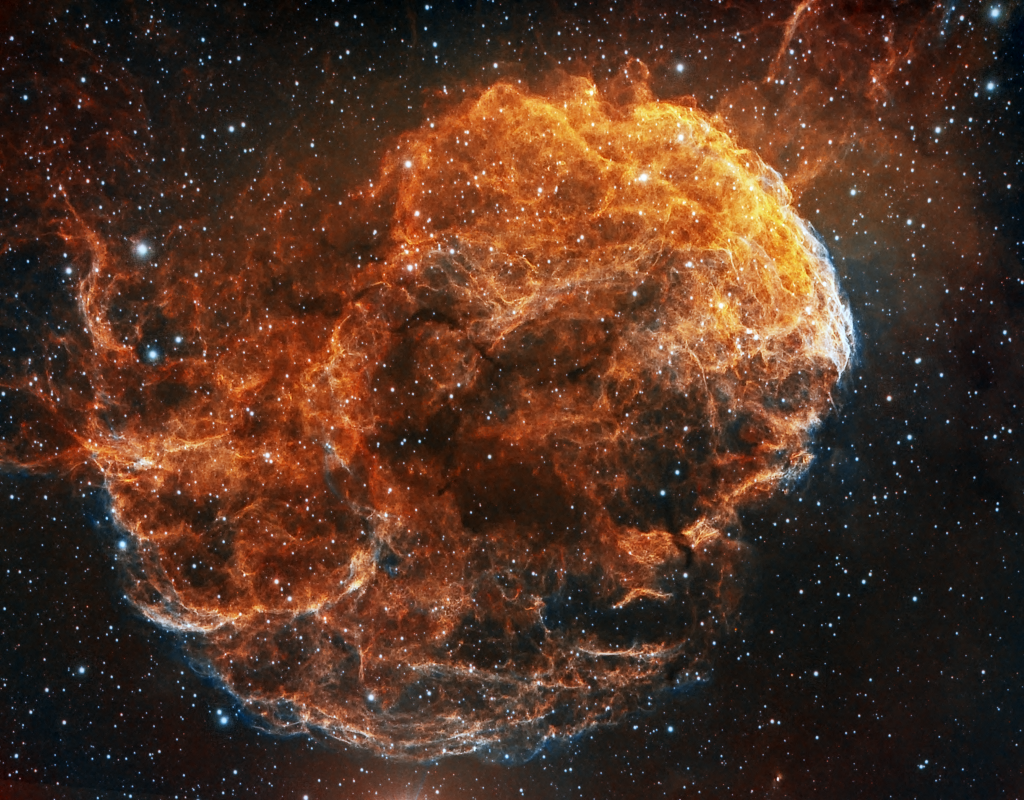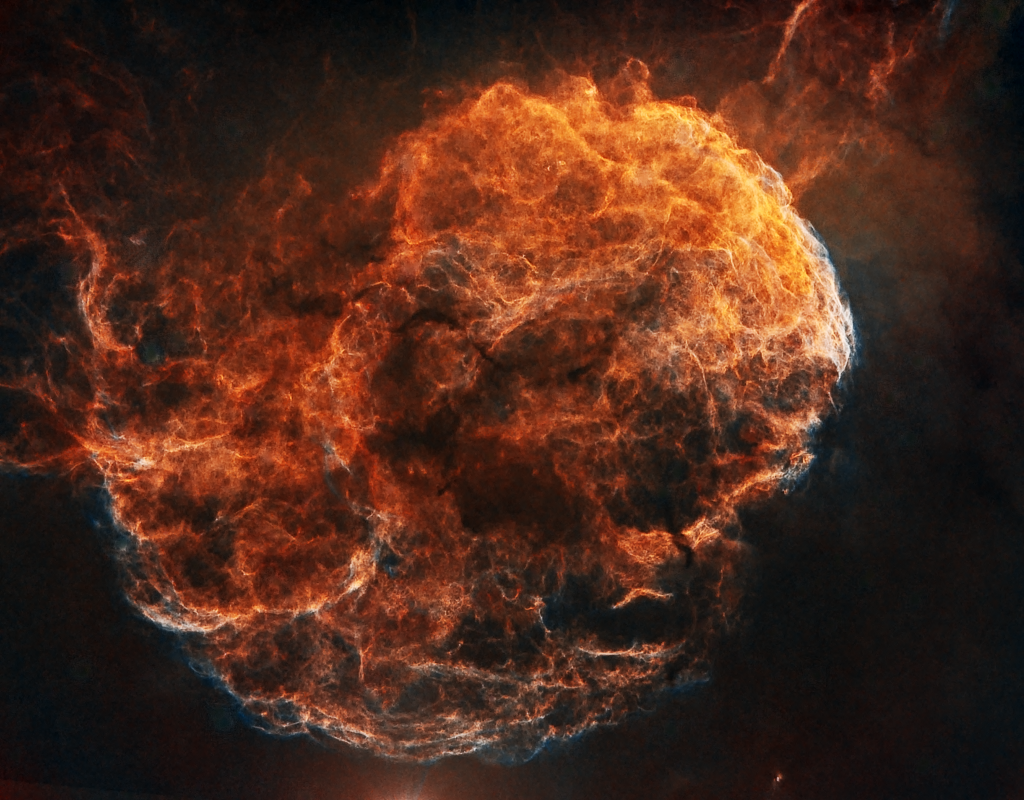
Similar Posts

Sombrero Galaxy
M104 is known as the “Sombrero Galaxy” due to its visual appearance – but a deep, long-exposure image reveals its true structure. It’s a lenticular galaxy about 30 million light-years away, about 30% the size of our own Milky Way galaxy.

Brand-new stars in NGC1333
This image really blows my mind – this is the reflection nebula NGC1333 in Perseus. The blue part is reflected gas and dust from the star that’s lighting up – that’s nothing too unusual. But check out the little red blobs above it. Many of those are “Herbig-Haro” objects, formed by jets spewing out from…

The Eagle Nebula – sans stars
This image was something of a happy accident – I spent a night capturing narrowband data on M16, the Eagle Nebula (home of the famous “pillars of creation”.) Of course I had to try reproducing the iconic Hubble image as best I could, but the color palette they use results in big, ugly, magenta-colored stars….

The Whirlpool Galaxy
The Whirlpool Galaxy (M51) appears to be sucking the life out of its companion, NGC 5195. While these galaxies are interacting, they’re not actually connected right now – it just looks that way.

The “Cygnus Wall” of Star Formation
This portion of the North America Nebula in the constellation – you guessed it – Cygnus, is a giant cloud of ionized gases where new stars are being created. It’s also pretty. These are both false color images, processed a couple of different ways. The first is the classic “Hubble Palette” that maps ionized emissions…

Off to See the Wizard
There are a lot of stars in this picture; the gases of the Wizard Nebula (formally SH2-142) are the birthplace of those stars, and more are being created even now. It’s located about 7,200 light-years away, and is extremely dim – it took over 9 hours of exposure time to capture this image. Your ability…


